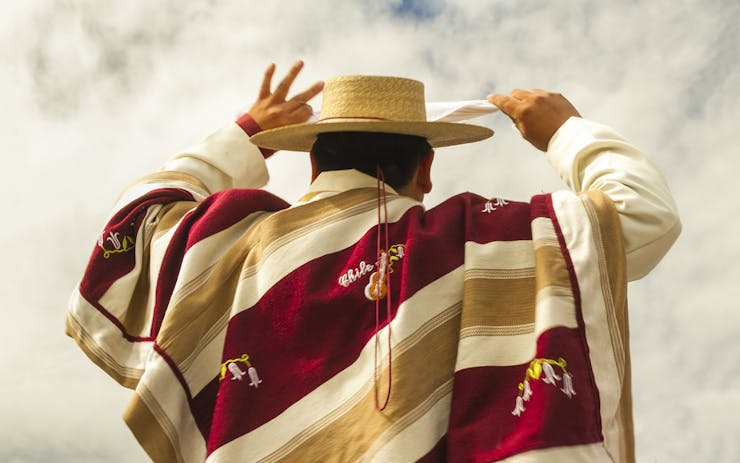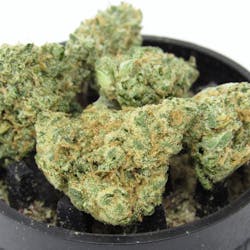Explore Spain’s role in bringing cannabis to the Americas and its indigenous people, how hemp made its way up to California, cannabis’ spread into the United States, and how a famous Mexican folk song referencing marijuana came to be.
Cannabis’ migration across the globe
Cannabis plants are believed to have evolved on the steppes of Central Asia, in the regions that are now Mongolia and southern Siberia. Both hemp and psychoactive marijuana were used in ancient China. The plant’s medicinal properties, including its use as an anesthetic during surgery, were supposedly realized and taught by the mythical Chinese emperor Shen Nung in 2737 BC. From China, coastal farmers brought the plant south to Korea.
The plant came to the South Asian subcontinent between 2000 BC and 1000 BC, when the region was invaded by the Aryans. Cannabis would become popular in India, where it was celebrated as one of “five kingdoms of herbs … which release us from anxiety” in an ancient Sanskrit poem.
The plant arrived in the Middle East between 2000 BC and 1400 BC, where it was likely used by the nomadic Scythians. This group carried the drug into southeast Russia and Ukraine. Germanic tribes brought the drug into central Europe, and marijuana went from there to Britain during the 5th century with the Anglo-Saxon invasions.
Over the following centuries, cannabis migrated to various regions of the world, traveling through Africa and reaching South America before being carried north, eventually reaching North America. Responsibility for the introduction of cannabis as an intoxicant in the Americas rests with the Spanish, with some help from the Portuguese. Prior to those conquests, Native Americans used tobacco and other substances in rituals as relaxants and hallucinogens, but not cannabis.
The New World before cannabis
There is much archaeological evidence that points to the use of entheogens early in the history of Mesoamerica. “Entheogen” is a word coined by academics denoting plants and substances used for traditional sacred rituals. A large number of inebriants, from tobacco and marijuana to alcohol and opium, have been venerated as gifts from the gods in different cultures at different times.
Entheogens have been used in a ritualized context for thousands of years; their significance is well established in many diverse practices geared towards achieving transcendence. These psychedelic substances have played a pivotal role in the spiritual practices of American cultures for millennia.
The Maya, for example, flourished in Central America from as early as 2000 BC right up until the fall of their last city, Nojpetén, to the Spanish in 1697. Their religion placed a strong emphasis on an individual being a communicator between the physical world and the spiritual world, and hallucinogens would have been helpful in bridging the gap. Mushroom stone effigies, dating to 1000 BC, give evidence that mushrooms were at least revered in a religious way.
Shop highly rated dispensaries near you
Showing you dispensaries nearSimilarly, the ancient Aztecs employed a variety of entheogenic plants and animals within their society from the 14th to 16th centuries. The various species have been identified through their depiction on murals, vases, and other objects. Historical evidence demonstrates that the Aztecs used several forms of psychoactive drugs: The Xochipilli statue gives the identity of several entheogenic plants, and the Florentine Codex vividly describes Aztec culture and society, including the use of entheogenic drugs.
Spain spreads hemp production
Christopher Columbus’ voyage in 1492 led to the Columbian Exchange, the widespread exchange of animals, plants, culture, human populations, communicable diseases, ideas, and technology between the Old and New World. It was one of the most significant events concerning ecology, agriculture, and culture in all of human history, and cannabis (hemp) was part of this exchange.
Even before the English and the French were thinking about exploiting the New World, Spain was promoting hemp production in its colonies throughout South America. As early as 1545, hemp seed was sown in the Quillota Valley, near the city of Santiago in Chile.
Most of the hemp fiber from these initial experiments were used to make rope for the army stationed in Chile. The rest was used to replace worn-out rigging on ships docked at Santiago. Eventual surpluses were shipped north to Peru. Attempts were also made at cultivating hemp in Peru and Colombia, but only the Chilean experiments proved successful.
Hemp is believed to have been brought to Mexico by Pedro Cuadrado, a conquistador in Cortes’ army, when the conqueror made his second expedition to Mexico.
Cuadrado and a friend went into business raising hemp in Mexico and were pretty successful at it. However, in 1550, the Spanish governor forced the two entrepreneurs to limit production because the natives were beginning to use the plants for something other than rope.
Hemp gets planted in California
By the 18th century, Spain’s economy began to plummet drastically and the country began to turn to its colonies for a boost. In 1777, experts were dispatched to various colonial outposts in Spanish America to teach the inhabitants the finer points of growing and preparing commercial hemp.
Three years later, orders from Spain instructed all viceroys to encourage hemp production throughout New Spain.
In 1801, the area around San Jose was chosen as an experimental farm area and an earnest effort was made to raise hemp for market.
In Mexico, the authorities decided that the province of California would be an ideal place to farm hemp, but the missions and individual farmers in the parishes preferred raising food crops and cattle. When no hemp arrived for shipment, experts were again deployed to California to instruct the people how to grow and prepare hemp for market.
In 1801, the area around San Jose was chosen as an experimental farm area and an earnest effort was made to raise hemp for market. From 1807 to 1810, California increased its hemp production from 12,500 to over 220,000 pounds. Production may have continued to increase, but in 1810 the Mexican Revolution effectively detached California from the main seat of government. Consequently, the subsidies that had stimulated hemp production were no longer available, and the commercial production of hemp came to an end.
‘Marijuana’ in Mexico
By the end of the 19th century the use of cannabis was noted in Mexico. It could be found growing in the wild and was commonly cultivated by peasants who mostly smoked it in pipes, but also ate or made infusions of it with sugar cane, milk, and chiles. It was extensively used by curandero, witchdoctors who were repositories of “the old knowledge.” Within a decade, cannabis cigarettes became common, the contents of which were called “marijuana.”
The word “marijuana” was colloquial, though its origins are uncertain. One possible root seems to have been the Mexican military slang phrase “Maria y Juana” (Mary and Jane), meaning a prostitute or brothel where these marijuana-filled cigarettes presumably could be bought and consumed.
Others suggest that it may have derived from the Nahuatl phrase mallihuan, meaning “prisoner,” which the Spanish pronunciation later altered. Whatever the case, in the early 20th century, the word was widespread in Mexico and, along with the substance itself, was beginning to creep northwards.
Cannabis’ arrival in the United States
After this pretty impressive trip through the pre-modern and modern worlds, cannabis finally came to the United States at the beginning of the 20th century. It arrived in the southwest United States from Mexico when people fled that country during the Mexican Revolution of 1910-1920.
The revolution that overthrew General Porfiro Diaz in 1910 increased the Mexican migration rate and, inevitably, the use of marijuana in the US.
At that time, Mexico was in a state of upheaval. The dictatorship of General Porfiro Diaz was unpopular and dissent was widespread. This period’s effect on the economy was devastating, and a large number of rank and file Mexicans migrated north over the Rio Grande into Texas and, to a lesser extent, New Mexico. Once there, many settled in shanty-towns and amongst the poorer quarters of towns, finding work as unskilled laborers.
Pancho Villa and the ‘roach’
The overthrow of General Diaz was engineered by Francisco Madero, whose forces included a man named Doroteo Arango. During another uprising two years later, Arango, who is better known today as Pancho Villa, would fall afoul of one of his commanding officers, General Victoriano Huerta. Villa was arrested and condemned to death, but after escaping from prison, he joined up with troops loyal to him, called the Division del Norte, and fled to the US. A well-known Mexican folksong, “La Cucaracha,” would become the anthem of Pancho Villa’s army:
The cockroach, the cockroach,
Now he cannot walk,
Because he doesn’t have, because he’s lacking,
Marijuana to smoke.
The song was most likely brought to Mexico from Spain, while the lyrics typically commemorate 19th century conflicts in both countries. Its most famous verses were written during the Mexican Revolution.
There are plenty of stories concerning the origins of the verse containing the marijuana reference. Some refer to the “cucaracha” as Pancho Villa’s car, which looked a bit like a cockroach with his soldiers hanging out the sides of it.
Others claim the song is ridiculing the federal forces that revolutionaries said couldn’t fight without smoking marijuana to increase their bravado. Some say, and this seems most likely, that it was directed at the dictatorial Victoriano Huerta, who was ridiculed by his many enemies as a drunk and pot fiend who lived only for his daily weed.
We can’t definitively confirm the protagonist of the song, but that won’t stop us conjecturing as to the provenance of another term—the finger-burning remains of a joint, or “roach.”
An alternative theory might cite the Spanish phrase “tabaco de cucaracha” as the origin of “roach” considering that the term refers to low-quality or adulterated tobacco. We can’t say for sure.





